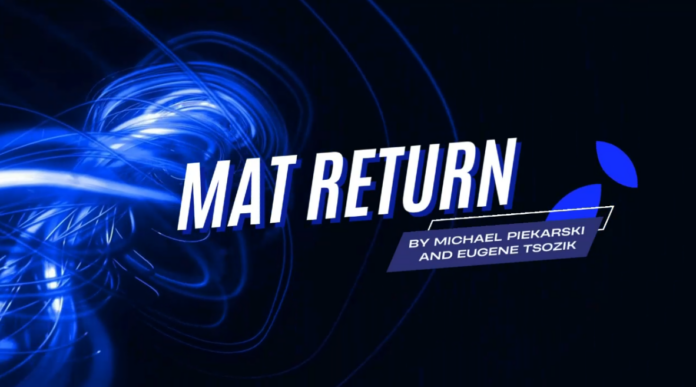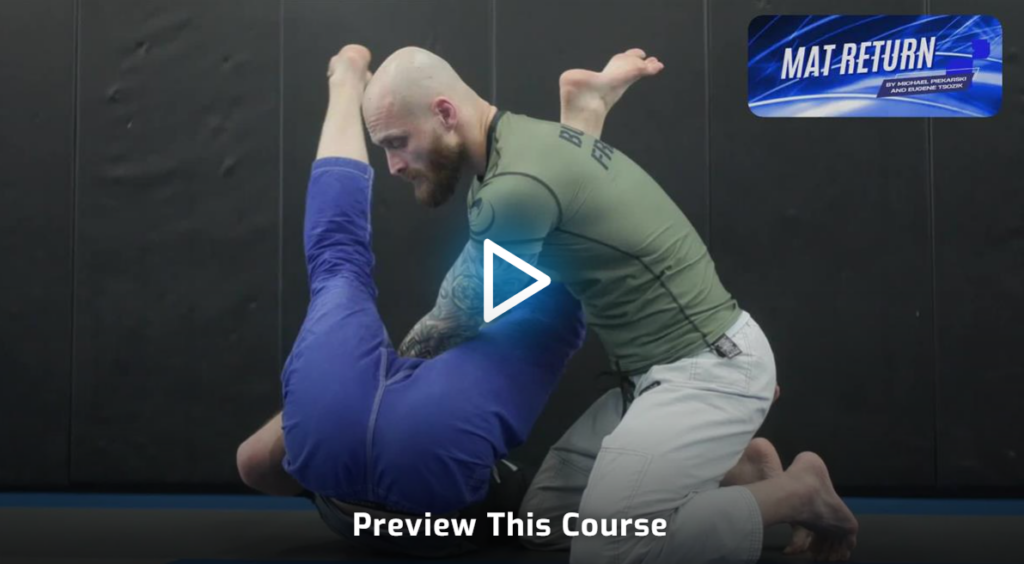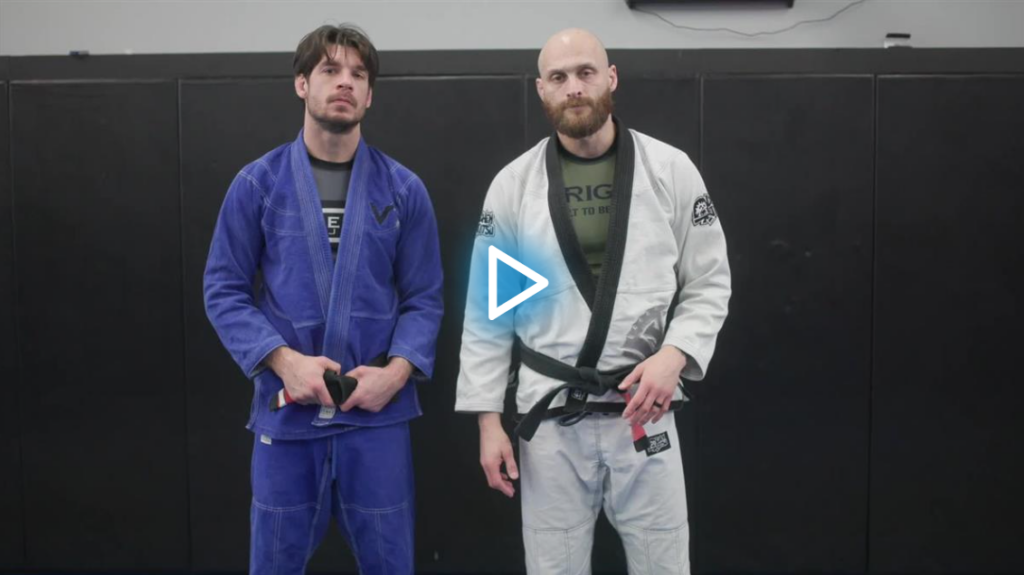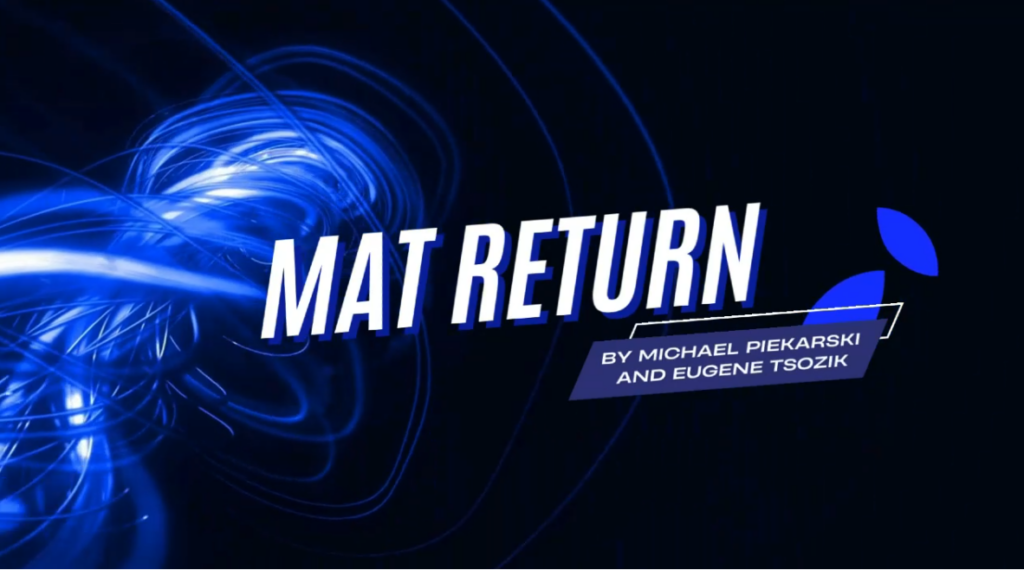
What is the worst part of having a BJJ injury? Ask any grappler and you’ll get the same answer that has nothing to do with the injury itself – the problem is having to take a break from training Jiu-Jitsu.
Everyone has tried to figure out Mat Return After BJJ Injury, with most people ending up more injured than before. The resources on the subject are scarce, and physical therapists and physicians who also happen to be training are even scarcer.
Now, a very well-thought-out and presented Eugene Tsozik and Michael Piekarski BJJ DVD solves both these issues.
Key Takeaways
- Three-part Gi instructional containing material with a running time of 4 hours.
- Covers the whole journey from acute injury all the way to full training.
- Contains injury screenings, movement exercises, and partner drills.
- BJJ World Expert Rating: 10 out of 10.
MAT RETURN AFTER BJJ INJURY DVD AVAILABLE HERE!!!

Dealing With BJJ Injuries
The harsh reality of training actively in any sport is that you will end up injured on more than one occasion. With Brazilian Jiu-Jitsu it is even more probable that you’ll end up nursing small twists, bumps, and injuries often, if not all the time you’re on the mats, given that you train frequently.
The issue with injuries in BJJ is that people tend to be impatient with resting as long as it takes for those pesky injuries to heal to a level where they won’t be reactivated by sparring. Everyone I know has come back to train while nursing an injury, with me being the worst example, as I have not let one BJJ injury, bug r small, settle down before getting back on the mats.
Just to paint a picture I taught a class two days after suffering an LCL tear on my knee – and that’s just one example. So, since nobody is going to listen to the doctors, and rest for the appropriate time required for a complete recovery, then we have to figure out a way to train safely with said injuries.
There is a way to do this, albeit not as optimal as resting and recovering. The Michael Piekarski BJJ we are looking into today is one of the rare instructional on how to deal with BJJ injuries, and more importantly, handle a mat return with one without making it worse.
Michael Piekarski & Eugene Tsozik: BJJ Physical Therapists
Michael Piekarski a.k.a Doctor Kick-Ass is a Brazilian Jiu-Jitsu black belt who also has a doctorate in physical therapy. He is a Board Certified Orthopedic Clinical Specialist with extensive experience working both with inpatient and outpatient clients, lately focusing mostly on grappling and MMA athletes in an outpatient setting.
Eugene Tsozik, known as the Jiu-Jitsu Therapist is also a black belt in BJJ, and a doctor of physical therapy, currently working in the UofL Health Frazier Rehabilitation Institute. He also trains Jiu-Jitsu daily, with 14 years of training under his belt, which have helped him understand human motion better than most other physical therapists out there.
Detailed Mat Return Michael Piekarski BJJ DVD Review
This interesting BJJ DVD instructional contains well over 4 hours of content, divided into three parts. each part has many chapters, going over a couple of dozen per volume. It is a Gi DVD, containing joint and movement screenings, advice on practicing safely both solo and with a partner, and a complete guide on coming back on the mats after an injury.
Part 1 – Understanding Injuries
The first part of the Mat Return After BJJ Injury DVD focuses on how to figure out what is wrong. Sometimes, we feel pain in specific body parts, say, the elbow, but the source of the pain might be in the shoulder, neck, or even the hip. This is exactly what physical therapists do when screening you for injuries.
Eugene and Michael begin by presenting the major red flags you should never ignore, before going into each key body part individually. They demonstrate how you can do a joint-by-joint screening starting from your neck and going all the way to the ankles. Super helpful content!
Part 2 – Grappling-Specific Movement
The middle portion of the instructional focuses on movement, building off the information gained from the previous scan regarding a possible injury. Here, the Jiu-Jitsu therapists look at some key movements used in BJJ and how they relate to specific injuries.
The chapters include a detailed exploration of spine rocks, rolls, planking, deep squats, kneeling positions, etc. The content outlines movements, explains how they make certain injuries better or worse and starts putting them into a grappling context.
The final portion of this volume of the Eugene Tsozik and Michael Piekarski BJJ DVD features very precise desaturations of key BJJ movements. Some examples include hip switching, shrimping, get-ups, bridging, and even Granby rolls and some specific passing motions like Torreandos and stepovers.
Part 3 – Drilling With A Partner
The final section of the Mat Return After BJJ Injury grappling instructional is all about returning to contact on the mats with the help of a partner. Every time you introduce another person’s movement while injured the risk of aggravating it goes up.
This part has lots of chapters, covering everything from standing grip fighting to pinning, escaping, guard work, and submission training. Some of the more interesting chapters include different Granby rolls, triangle drills, lasso guard drills, and lots of pummeling work.
That brings us to what I consider to be the barest part of this DVD. As the instructional draws to a close, Michael and Eugene talk about dangerous positions, an how to do basic tests before each practice so that you can gauge how your injury recovery is going.
Getting Back On The Mats
What you need to ensure a smooth return to the mats after an injury is to find the delicate balance between training as soon as possible in a smart way and giving the injury the minimum time needed to heal up to a certain point.
The best part about BJJ is that there are so many different positions and safety checkpoints, that you can freely train and not feel or aggravate an injury. The key aspects are recognizing exactly what your injury is about, and then finding out the best position to keep it from flaring up.
A great example is the half guard. Did you know that the half guard emerged because Roberto “Gordo” Correa came up with it because he had a knee injury, and decided to hide his injured leg in between his training partners’ legs when rolling?
This clearly shows that it is not too difficult to train with a grappling injury, as long as you understand how to set up your training. A resource like the Mat Return After BJJ Injury DVD is perfect to help you figure this out. Oh, and don’t forget to be extra picky about training partners!

DOWNLOAD DVD MAT RETURN AFTER BJJ INJURY
The Most Important Mat Return
IF you have the luxury of having a physician who also happens to train in BJJ, or has trained at some point, you’re in luck, as most doctors automatically prescribe the time of the mats. The Mat Return After BJJ Injury Eugene Tsozik and Michael Piekarski BJJ DVD features not one, but two grapplers who are also physical therapists.
Considering that this subject is rarely covered in instructional, along with the proven track record and success stories behind both coaches and the fact they both grapple, means that you should add it to your collection. Yes, even if you are healthy and well because that is only temporary in BJJ!
Danaher’s Uke Placido Santos Seriously Injured From Estima Lock
Kettlebell Shoulder Workout & How it Prevents Injuries in BJJ


![Darce Choke Encyclopedia – Origins, Mechanics and Variations [2025] BJJ, choke, Brabo, BJJ Darce Choke, D'arce Choke, Darce BJJ Choke](https://bjj-world.com/wp-content/uploads/2017/11/JungPoirierLeeYahoo-218x150.jpg)










![Slicin’ Calves Mikey Musumeci DVD Review [2025] Slicin' Calves Mikey Musumeci DVD Review](https://bjj-world.com/wp-content/uploads/2025/04/slicin-calves-mikey-musumeci-dvd-review-218x150.png)
![Jiu-Jitsu For Old Guys Guard Retention Bernardo Faria DVD Review [2025] Jiu-Jitsu For Old Guys Guard Retention Bernardo Faria DVD Review](https://bjj-world.com/wp-content/uploads/2025/03/old-guys-guard-retention-bernardo-faria-dvd-review-218x150.png)
![X-Guard Trickery Kyle Sleeman DVD Review [2025] X-Guard Trickery Kyle Sleeman DVD Review](https://bjj-world.com/wp-content/uploads/2025/03/x-guard-trickery-kyle-sleeman-dvd-review-218x150.png)
![Countering with Crab Ride Anthony Budion DVD Review [2025] Countering with Crab Ride Anthony Budion DVD Review](https://bjj-world.com/wp-content/uploads/2025/03/countering-with-crab-ride-anthony-budion-dvd-review-218x150.png)
![Closet Closed Guard Craig Jones DVD Review [2025] Closet Closed Guard Craig Jones DVD Review](https://bjj-world.com/wp-content/uploads/2025/03/closet-closed-guard-craig-jones-dvd-review-218x150.png)
![Xanadu Back Takes Levi Jones-Leary DVD Review [2025] Xanadu Back Takes Levi Jones-Leary DVD Review](https://bjj-world.com/wp-content/uploads/2025/03/xanadu-back-takes-levi-jones-leary-dvd-review-218x150.png)
![Full Guard Formula James Booth DVD Review [2025] Full Guard Formula James Booth DVD Review](https://bjj-world.com/wp-content/uploads/2025/02/full-guard-formula-james-booth-dvd-review-324x235.png)
![Unpinnable Mount Escape Mastery Haleem Syed DVD Review [2025] Mount Escape Mastery Haleem Syed DVD Review](https://bjj-world.com/wp-content/uploads/2025/01/mount-escape-mastery-haleem-syed-dvd-review-100x70.png)
![Back Hacks Yigit Haney BJJ DVD Review [2025] Back Hacks Yigit Haney BJJ DVD Review](https://bjj-world.com/wp-content/uploads/2024/12/back-hacks-yigit-haney-bjj-dvd-review-100x70.png)


![Daisy Fresh WHITE BELT Wrestling Curriculum DVD Review [2024] Daisy Fresh WHITE BELT Wrestling Curriculum DVD Review](https://bjj-world.com/wp-content/uploads/2024/10/daisy-fresh-white-belt-wrestling-curriculum-review-100x70.png)
![Creating Back Exposure Luke Griffith DVD Review [2025] Creating Back Exposure Luke Griffith DVD Review](https://bjj-world.com/wp-content/uploads/2025/01/creating-back-exposure-luke-griffith-dvd-review-100x70.png)
![Essential Shin To Shin System Shawn Williams DVD Review [2025] Essential Shin To Shin System Shawn Williams DVD Review](https://bjj-world.com/wp-content/uploads/2025/01/shin-to-shin-system-shawn-williams-dvd-review-100x70.png)
![Highlight Hip Throws Christian Ozbek DVD Review [2025] Highlight Hip Throws Christian Ozbek DVD Review](https://bjj-world.com/wp-content/uploads/2025/01/highlight-hip-throws-christian-ozbek-dvd-review-100x70.png)
![Special K Guard Neil Melanson DVD Review [2025] Special K Guard Neil Melanson DVD Review](https://bjj-world.com/wp-content/uploads/2025/03/special-k-guard-neil-melanson-dvd-review-100x70.png)

![Master The Move Anaconda Strangle John Danaher DVD Review [2025] Master The Move Anaconda Strangle John Danaher DVD Review](https://bjj-world.com/wp-content/uploads/2025/02/anaconda-strangle-john-danaher-dvd-review-100x70.png)
![Gracie Secrets Closed Guard Kyra Gracie DVD Review [2024] Gracie Secrets Closed Guard Kyra Gracie DVD Review](https://bjj-world.com/wp-content/uploads/2024/12/closed-guard-kyra-gracie-dvd-review-100x70.png)
![Upper Body Chain Attacks Janine Mocaiber DVD Review [2025] Upper Body Chain Attacks Janine Mocaiber DVD Review](https://bjj-world.com/wp-content/uploads/2025/03/upper-body-chain-attacks-janine-mocaiber-dvd-review-100x70.png)
![Charles Allan Price Building Workouts For BJJ DVD Review [2024] Charles Allan Price Building Workouts For BJJ DVD Review](https://bjj-world.com/wp-content/uploads/2024/09/charles-allan-price-building-workouts-for-bjj-review-100x70.png)

![Basic Closed Guard Jasmine Rocha DVD Review [2024] Basic Closed Guard Jasmine Rocha DVD Review](https://bjj-world.com/wp-content/uploads/2024/11/basic-closed-guard-jasmine-rocha-dvd-review-100x70.png)
![No-Gi Defense Xande Ribeiro DVD Review [2024] No-Gi Defense Xande Ribeiro DVD Review](https://bjj-world.com/wp-content/uploads/2024/11/no-gi-defense-xande-ribeiro-dvd-review-100x70.png)
![Roger Gracie Closed Guard System DVD Review [2025] Roger Gracie Closed Guard System DVD Review](https://bjj-world.com/wp-content/uploads/2025/01/roger-gracie-closed-guard-system-dvd-review-100x70.png)

![Simplify the System Side Scissor Brian Glick DVD Review [2024] Simplify the System Side Scissor Brian Glick DVD Review](https://bjj-world.com/wp-content/uploads/2024/09/side-scissor-brian-glick-dvd-review-2024-100x70.png)
![Welcome To The Darce Side Travis Moore DVD Review [2025] Welcome To The Darce Side Travis Moore DVD Review](https://bjj-world.com/wp-content/uploads/2025/01/welcome-to-the-darce-side-travis-moore-dvd-review-100x70.png)


![Dubious De La Riva Dominique Bell DVD Review [2024] Dubious De La Riva Dominique Bell DVD Review](https://bjj-world.com/wp-content/uploads/2024/10/dubious-de-la-riva-dominique-bell-dvd-review-100x70.png)

![Underhooks With Uncle Jeff Glover DVD Review [2025] Underhooks With Uncle Jeff Glover DVD Review](https://bjj-world.com/wp-content/uploads/2025/02/underhooks-with-uncle-jeff-glover-dvd-review-100x70.png)

